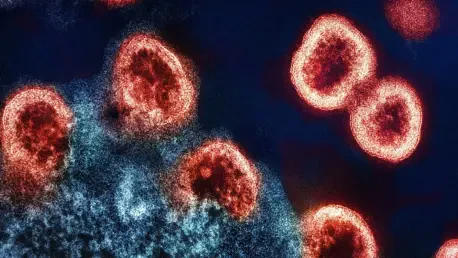Imagine a world where a single genetic mutation could undermine years of medical advancements in fighting HIV. In Lishui, the battle against HIV-1 continues as scientists uncover troubling patterns of drug resistance and transmission. At the core of the issue lies the alarming challenge of transmitted drug resistance (TDR). As more cases of HIV-1 infections are documented in Lishui, public health officials face an urgent need to address this growing threat. Understanding how the virus evolves and spreads within the community is essential for effective intervention and treatment strategies.
Genetic Diversity and Prevalent Subtypes
The study on HIV-1 infections in Lishui has identified a diverse range of subtypes circulating within the region. CRF08_BC, CRF07_BC, CRF01_AE, and subtype B emerge as the key players, with CRF08_BC showing dominance over the years. This genetic variability complicates the formulation of universal treatment regimens and highlights the need for tailored therapeutic approaches. CRF08_BC stands out as the most prevalent subtype, maintaining its dominance across different years. This consistency points to stable transmission patterns within the population. By analyzing the subtype distribution, researchers can infer the underlying dynamics of HIV-1 spread and adapt public health strategies accordingly.
Transmitted Drug Resistance Trends
Transmitted drug resistance poses a significant challenge in managing HIV-1 infections effectively. In Lishui, the prevalence of TDR has reached 12.1%, categorized as an intermediate level of drug resistance. Among the various mutations, the K103N mutation in non-nucleoside reverse transcriptase inhibitors (NNRTIs) has been notably frequent, complicating treatment options. Yearly statistics underscore the steady presence of TDR, necessitating constant surveillance and adaptive treatment protocols. The ongoing rise in TDR calls for intensified efforts to monitor and respond to resistance patterns, ensuring that antiretroviral therapy (ART) remains effective for those affected.
Transmission Routes and Dynamics
Heterosexual transmission remains the predominant route for HIV-1 spread in Lishui, contributing significantly to new infections. This mode of transmission underscores the need for targeted educational campaigns and preventive measures to curb the spread within heterosexual populations. The impact of men who have sex with men (MSM) on specific subtype transmission is also notable. Certain subtypes, such as CRF55_01B, are more prevalent among MSM, indicating distinct transmission dynamics within this group. By understanding these patterns, public health authorities can implement more precise interventions to address the unique risks faced by different segments of the population.
Demographic Influences on HIV Spread
Demographic factors play a crucial role in shaping the transmission dynamics of HIV-1. Age, education, marital status, and gender significantly influence an individual’s risk of contracting and spreading the virus. For example, older individuals and those with lower educational levels are more likely to be involved in transmission clusters, highlighting the need for targeted outreach efforts. Molecular network analysis sheds light on these clustering dynamics, revealing high-risk transmission clusters and their associated demographic characteristics. Such insights enable the development of targeted interventions aimed at reducing the spread within vulnerable populations.
Expert Perspectives and Patient Stories
Leading epidemiologists are voicing concerns over the trends of transmitted drug resistance, emphasizing the need for continuous monitoring and response. Recent studies published in the Virology Journal offer valuable insights into the genetic diversity and transmission dynamics of HIV-1 in Lishui, providing a robust foundation for future research and intervention strategies. Healthcare professionals are also optimizing ART strategies, drawing on expert opinions to refine treatment protocols. Patient experiences within Lishui’s treatment programs highlight the real-world challenges faced by those living with HIV-1, underscoring the importance of tailored support and comprehensive care.
Strategic Measures for Combating HIV-1
Implementing strategic HIV surveillance measures is paramount to track and respond to evolving transmission patterns and drug resistance trends. Educational campaigns targeting at-risk populations can raise awareness and promote preventive behaviors, reducing new infections effectively. Monitoring ART outcomes through practical frameworks ensures that treatments remain effective, particularly in the face of rising drug resistance. Community-specific interventions, tailored to address local transmission dynamics and demographic risk factors, can enhance the precision of public health efforts.
Conclusion
The findings from the study on HIV-1 infections in Lishui underscore the critical need for enhanced surveillance and targeted interventions. The rising levels of transmitted drug resistance, particularly NNRTIs, have highlighted the importance of adaptive treatment strategies. Public health authorities must implement educational campaigns and robust ART monitoring programs to mitigate transmission risks effectively. As researchers continue to explore the intricate dynamics of HIV-1 spread, these insights will guide the development of precise intervention measures, ensuring a more effective response to the HIV epidemic in Lishui.









